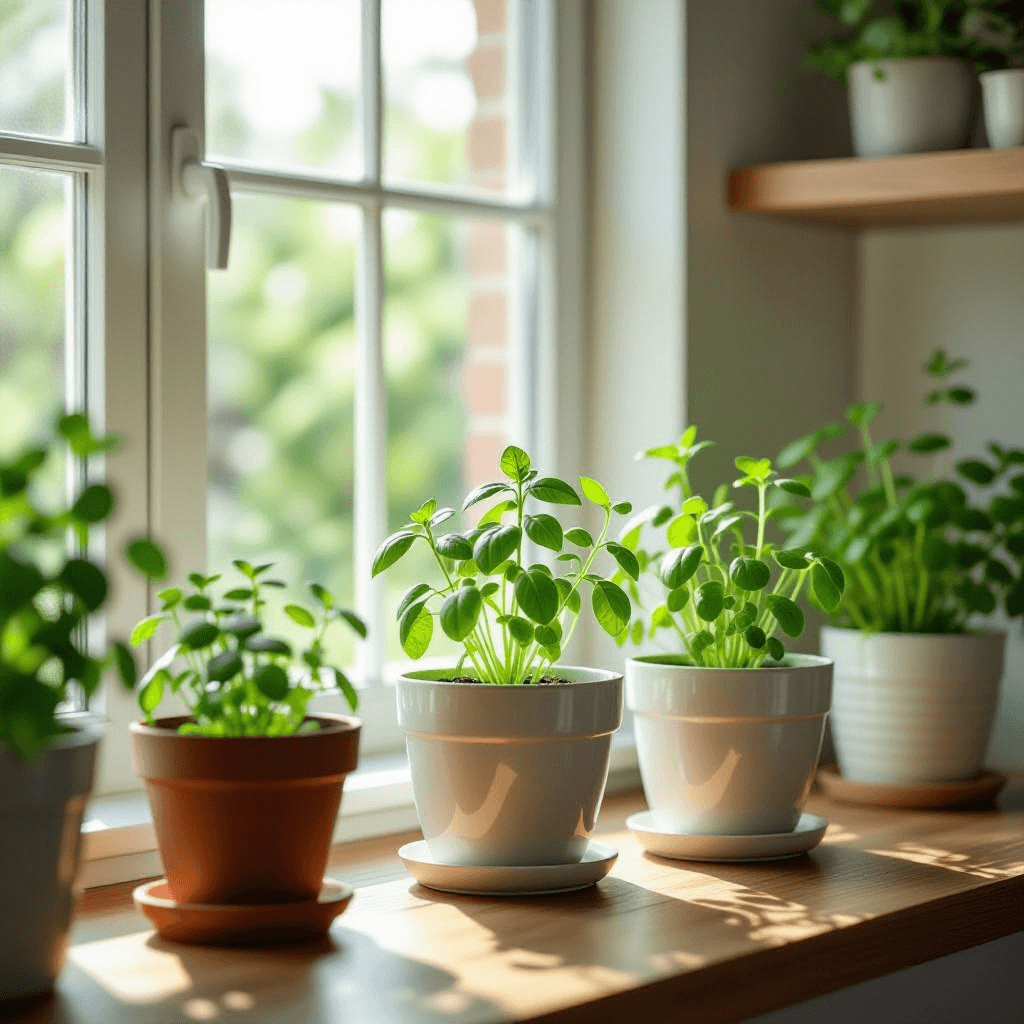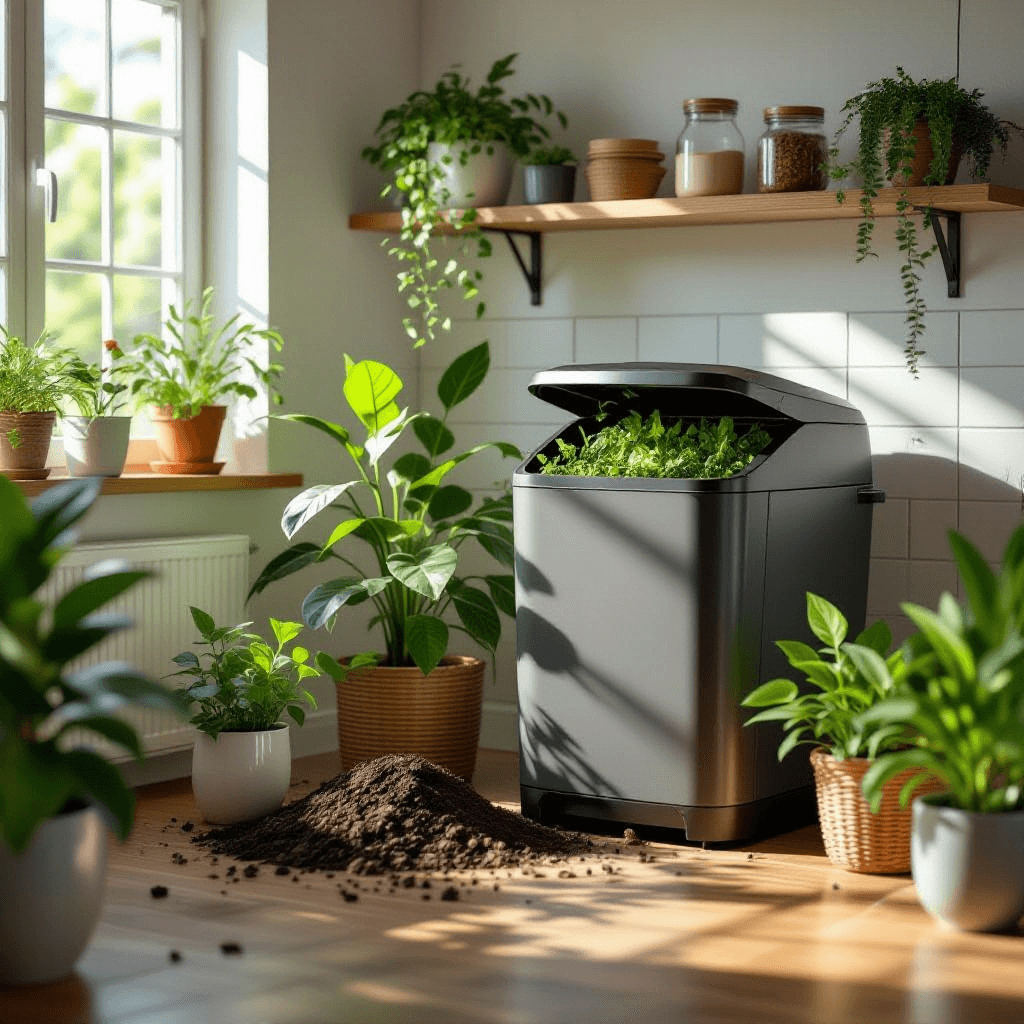Introduction to Indoor Herb Gardening
Indoor herb gardening has gained popularity among home cooks and gardening enthusiasts alike, offering a practical solution for those with limited outdoor space. The appeal of this hobby lies not only in the ability to cultivate fresh herbs at one’s convenience but also in the myriad of benefits that come with nurturing a personal herb garden within the confines of your home.
One of the most significant advantages of growing herbs indoors is the accessibility of fresh ingredients for cooking. Many culinary enthusiasts insist that freshly harvested herbs elevate the flavor profile of their dishes, providing a burst of aroma and taste that dried alternatives simply cannot replicate. Indoor herb gardening ensures that you can select from a variety of herbs, such as basil, parsley, or rosemary, just steps away from the kitchen door, allowing for spontaneous culinary creations at any time.
Additionally, cultivating herbs indoors contributes to improved air quality. Many herbs, such as mint and thyme, are known to purify the air, creating a healthier living environment. By investing in indoor herb gardening, individuals can enjoy the dual benefit of enriching their meals while simultaneously promoting a cleaner atmosphere at home. Moreover, the lush greenery of herb plants can enhance the aesthetic appeal of any space, adding a touch of nature that can be both soothing and invigorating.
Furthermore, indoor gardening fosters a sense of accomplishment and relaxation. The act of caring for plants can serve as a form of stress relief, encouraging mindfulness and a connection to nature even within an urban setting. Overall, the journey into indoor herb gardening presents an opportunity to embrace a sustainable and gratifying hobby that enriches both the kitchen and the home environment.
Choosing the Right Herbs for Indoors
Indoor gardening offers a fantastic opportunity to cultivate a variety of herbs that can enhance both culinary experiences and the overall aesthetic of your home. When selecting herbs for indoor gardening, it is essential to consider their growth requirements, light needs, and resistance to pests. Several popular herbs thrive in indoor environments, making them ideal candidates for your herb garden.
One of the most favored herbs is basil. Known for its fragrant leaves and essential role in many Mediterranean dishes, basil requires approximately six hours of bright, indirect sunlight each day. It thrives in well-drained soil and should be watered regularly, allowing the top inch of soil to dry between waterings. Besides culinary uses such as pesto or garnishing, basil also boasts potential health benefits, including anti-inflammatory properties.
Parsley is another excellent choice for indoor gardening. It is a hardy herb that can adapt to various light conditions, although it flourishes with four to six hours of light daily. Parsley adds a fresh flavor to dishes like soups and salads and is also rich in vitamins A, C, and K. It’s worth noting that parsley has a slow germination period, so patience is required when starting from seeds.
Rosemary is a robust perennial herb known for its strong aroma and flavor, lending depth to a range of savory dishes. This herb prefers a sunny spot, ideally receiving six to eight hours of direct sunlight each day. Additionally, rosemary is drought-tolerant, making it relatively easy to care for. Its woody stems and evergreen leaves not only contribute to your culinary endeavors but also add a touch of elegance to your indoor space.
In selecting herbs for your indoor garden, consider factors such as light availability, growth habits, and your personal culinary preferences. By doing so, you will create an herb garden that is both fruitful and enjoyable to maintain.
Selecting Containers and Growing Mediums
When embarking on the journey of indoor herb gardening, one of the foremost considerations is the selection of appropriate containers and growing mediums. Each type of container has its own advantages and limitations, which play a crucial role in the health and productivity of the herbs being cultivated.
Pots are the most common choice for indoor herbs. They are available in various sizes and materials, such as terracotta, plastic, and ceramic. Terracotta pots are highly favored due to their ability to absorb excess moisture, thus preventing root rot. However, they may require more frequent watering compared to plastic pots, which retain moisture better but may not offer adequate drainage. One essential factor to consider when selecting pots is the presence of drainage holes, as proper drainage is vital for preventing waterlogging.
Hydroponic systems are another popular option for growing herbs indoors. These systems utilize nutrient-rich water solutions to nourish the plants, eliminating the need for traditional soil. While hydroponics can promote faster growth and higher yields, they require more monitoring and management of nutrient levels. Beginners may find hydroponic systems more complex and, therefore, may prefer conventional pots initially.
Vertical planters are particularly suitable for those with limited space. These containers allow for a variety of herbs to be grown in a compact area, making optimal use of vertical space. However, it is essential to ensure that such systems can provide adequate drainage and a sufficient growing medium to support root development.
The choice of growing medium can greatly affect the success of indoor herb gardening. Standard potting soil is suitable for most herbs, offering necessary nutrients and drainage. However, alternative substrates, such as coconut coir or perlite, can also be beneficial, especially for hydroponic systems. Selecting the right combination of container and growing medium is critical to ensure healthy growth and ease of maintenance for indoor herbs.
Caring for Your Indoor Herb Garden
Maintaining a healthy indoor herb garden requires diligence and attention to several essential factors. One of the critical aspects is establishing a proper watering schedule. Herbs generally prefer their soil to dry out slightly between waterings, so it is advisable to check the top inch of soil. If it feels dry to the touch, it is time to water. Over-watering can lead to root rot, while under-watering may cause wilting, so a balance is necessary. A good guideline is to water once a week, adjusting based on the humidity and temperature of your indoor environment.
Fertilization also plays a vital role in the health of your indoor herbs. During the growing season, which typically lasts from spring to early fall, it is beneficial to use a balanced liquid fertilizer every four to six weeks. This practice ensures that your herbs receive the necessary nutrients to flourish. However, be cautious of over-fertilizing, as this can weaken the plants and affect their flavor.
Light requirements are another critical consideration for successful indoor herb gardening. Most herbs thrive in bright, indirect sunlight for about six to eight hours a day. If natural light is insufficient, consider using grow lights specifically designed for indoor plants to supplement their light needs. Positioning your herbs near south or west-facing windows can also enhance their growth potential.
Pest management is equally important; indoor herbs can occasionally fall victim to pests such as aphids, spider mites, or whiteflies. Regularly inspect your plants for any symptoms of infestation. In the event pests are detected, using organic solutions like neem oil or insecticidal soap can effectively manage these unwanted guests while keeping your herbs safe for consumption. By practicing these care routines, you can enjoy a thriving indoor herb garden year-round.


